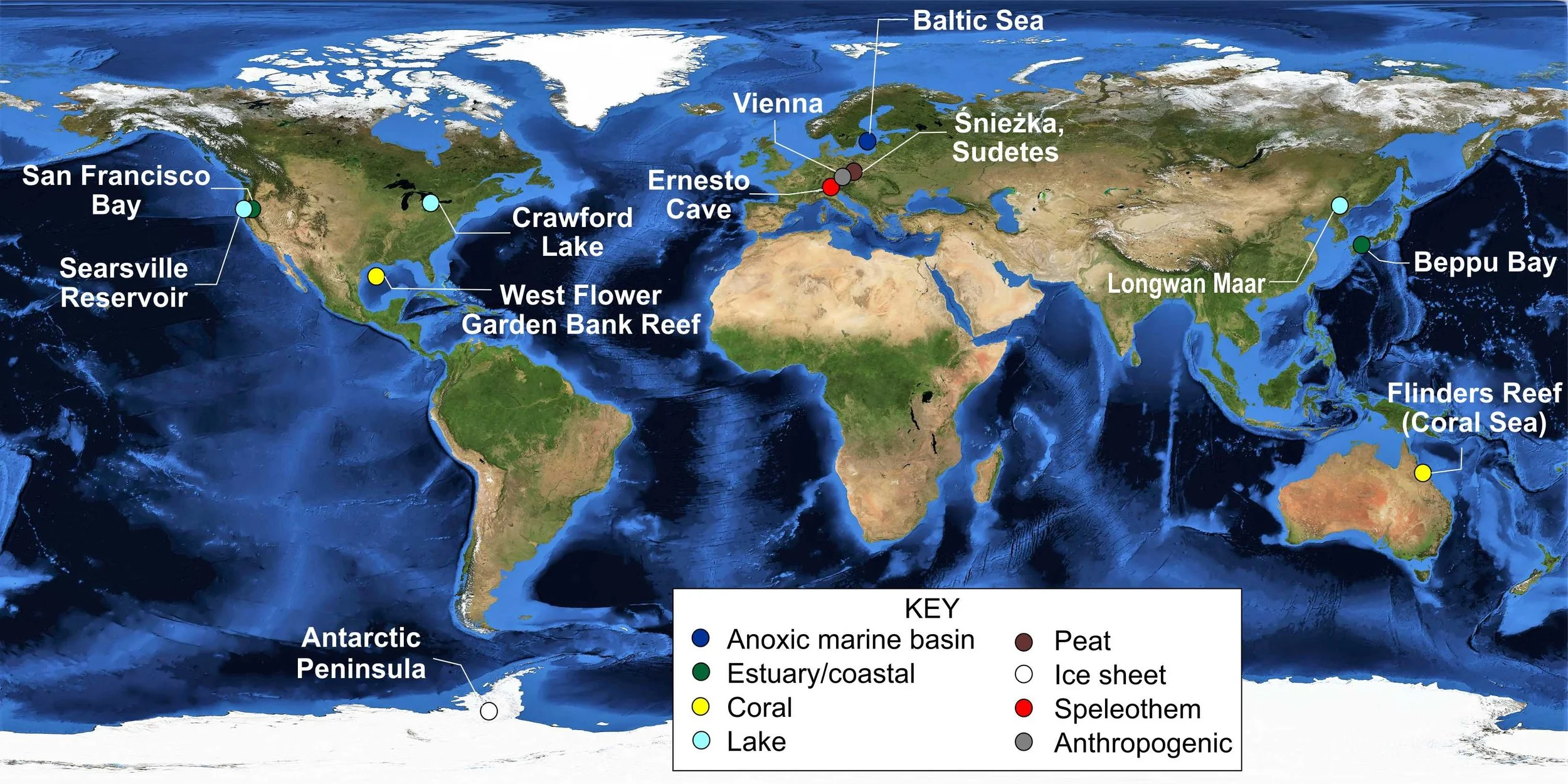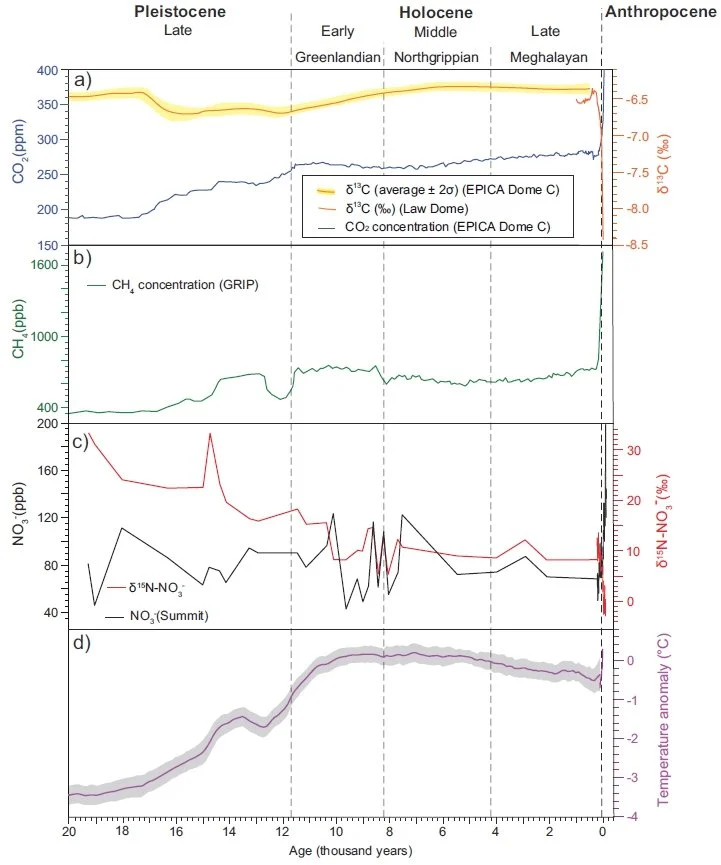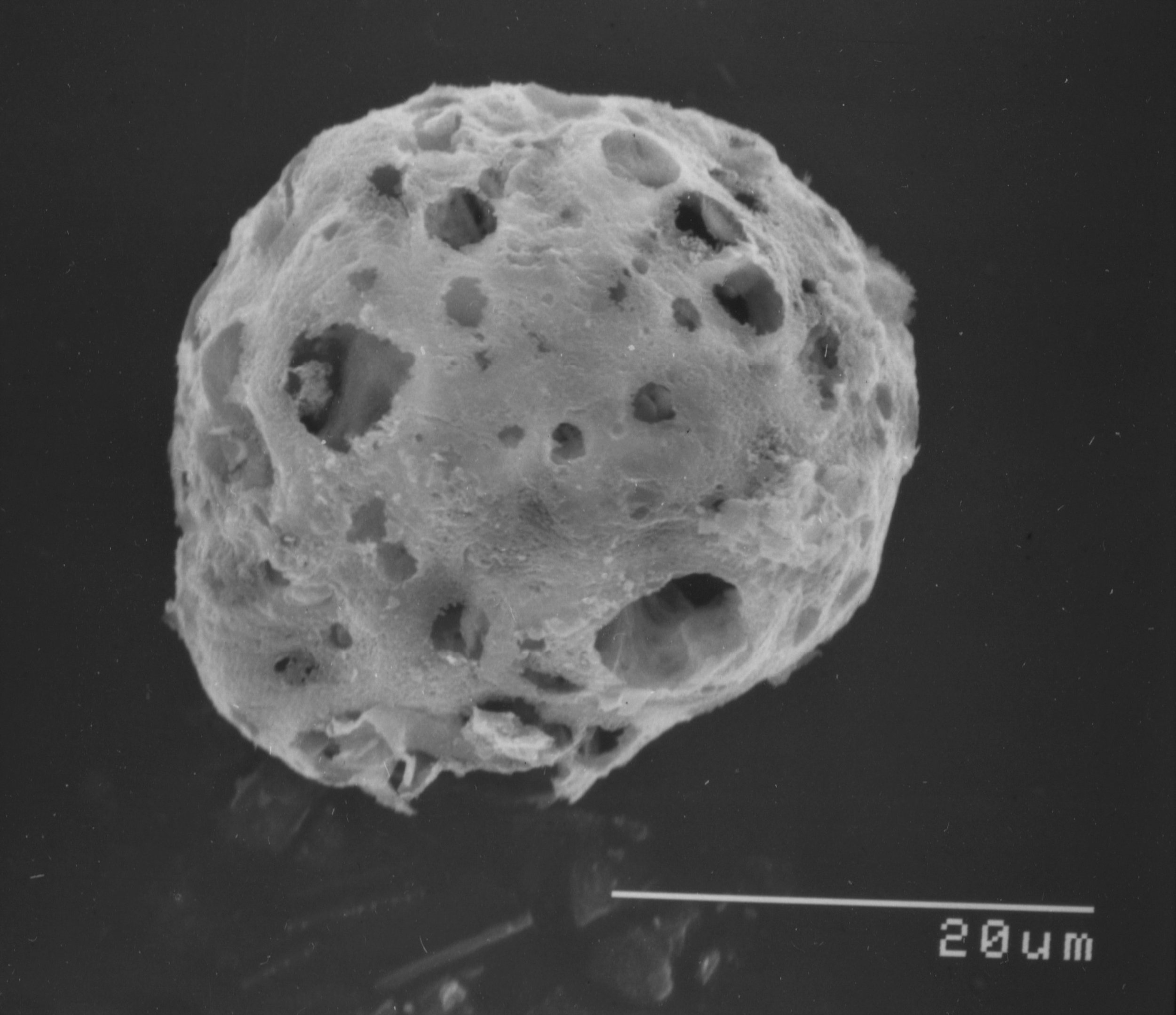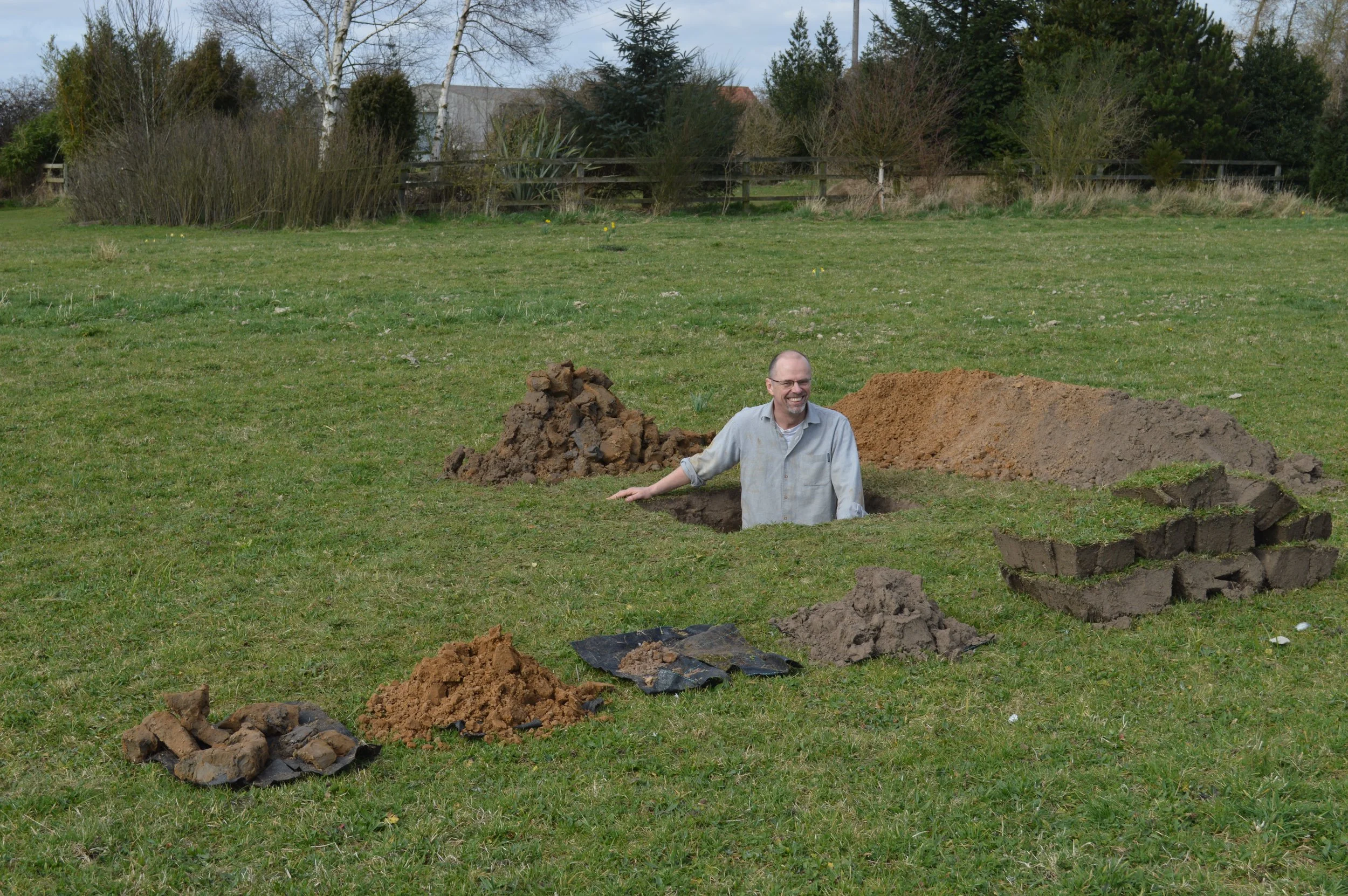Anthropocene
INDOOR MEETING
(Joint with the Yorkshire Philosophical Society)
Convened by Colin Waters
Saturday 15th October, 13:30-16:30
Tempest Anderson Hall at the Yorkshire Museum, York YO1 7FR
Summary of programme:
1.30pm-1.45pm YPS welcome and YGS Society Business
1.45pm-2.15pm Colin Waters: Understanding of the geological Anthropocene and the current process of its formal definition
2.15pm-2.45pm Neil Rose: A burning issue: Fossil fuel combustion products as markers for the Anthropocene
2.45pm-3.15pm Tea and Coffee
3.15pm-3.45pm Andy Cundy: Nuclear fingerprints of the Anthropocene
3.45pm-4.15pm Chris Thomas: We are in the Anthropocene epoch: an ecologist’s perspective
4.15pm-4.30pm Questions and Discussion; Close of Meeting
This is a highly opportune moment to hold this meeting. In November 2022 the Anthropocene Working Group (AWG), the body established to investigate the Anthropocene as a potential addition to the Geological Timescale and International Chronostratigraphic Chart, will be voting on which of 12 sites will be proposed as a Global boundary Stratotype Section and Point (GSSP). Three members of the AWG will outline the case for the Anthropocene as an epoch, describing the candidate localities and explain the evidence that comes specifically from burning fossil fuels and radionuclides from above-ground nuclear testing. Finally, we have an ecologist’s view of how the modern transformation of biota sits within a long duration of human modification of the biosphere.
Acknowledgements for Waters, Rose and Cundy:
The authors are grateful to the Haus der Kulturen der Welt, Berlin for their support and funding, and acknowledge the members of the Anthropocene Working Group and scientists who are co-ordinating work on each of the Anthropocene GSSP candidate sites for access to the site details and data presented here.
Understanding of the geological Anthropocene and the current process of its formal definition Professor Colin Waters (University of Leicester and AWG Chair) and Simon Turner (UCL and AWG Secretary)
The Anthropocene Working Group of the Subcommission on Quaternary Stratigraphy, is the body tasked to investigate the reality of, and provide a definition for, the Anthropocene as a new epoch of geological time. It is currently assessing 12 candidates for a Global boundary Stratotype Section and Point (golden-spike), with voting in November 2022. This presentation will discuss the 12 sites, located in marine, estuarine and lake sediments, peat, corals, ice, a speleothem and anthropogenic deposits and which span 5 continents. It will also introduce the array of physical, chemical, biological and climatic signatures that record a profound shift in the Earth System. Some signatures will prove to be short spikes in the geological record which are quickly reversed through policy changes (e.g. fallout radionuclides, fly ash particles, certain organic pesticides). Others will continue as clear markers into the near future (e.g. microplastics) and long-term (e.g. CO2-forced climate change), irrespective of current actions. Others will represent permanent and growing changes (e.g. extinctions and species transfers) demonstrating that the realities of the Holocene world no longer persist. It will discuss the scale and timing of these changes and explain why the mid-20th century represents the optimal level for the onset of the Anthropocene.
References:
Head, M. J., Steffen, W., Fagerlind, D., Waters, C. N. et al. (2021) The Great Acceleration is real and provides a quantitative basis for the proposed Anthropocene Series/Epoch. Episodes. https://doi.org/10.18814/epiiugs/2021/021031
Waters, C. N., Zalasiewicz, J., Summerhayes, C., Barnosky, A.D. et al. (2016) The Anthropocene is functionally and stratigraphically distinct from the Holocene. Science, 351(6269): 137. http://doi.org/10.1126/science.aad2622
Zalasiewicz, J., Waters, C. N., Williams, M. and Summerhayes, C. (editors) (2019). The Anthropocene as a Geological Time Unit: A Guide to the Scientific Evidence and Current Debate. Cambridge University Press, pp. 361.
Location of candidate GSSP localities currently under investigation indicating the depositional environment. Satellite image: NASA Visible Earth. Source: reproduced with amendments from Head et al. (2021).
Key trends and drivers for the Anthropocene from the Late Pleistocene to present, based on ice core records from Greenland and Antarctic and modern instrumental data (from Head et al., 2001). Relative stability characterises the Holocene, and sharp deflections the Anthropocene. The start of the Anthropocene in the mid-20th century contrasts with the relatively gradual changes across the Pleistocene–Holocene boundary.
A burning issue: Fossil fuel combustion products as markers for the Anthropocene
Professor Neil Rose (Environmental Change Research Centre, Department of Geography, University College London and AWG voting member), Yongming Han, Stephen Himson, Jun Inoue, Sarah Roberts and Simon Turner
The products of fossil fuel combustion are a major driving force behind much of the environmental change we observe today. In addition to increasing atmospheric carbon dioxide levels and its effects on global climate change, the burning of these fuels produces a wide range of other gases and particulates. These include a spectrum of particle-types captured under the broad title ‘elemental carbon’ but also mercury and organic compounds known as polycyclic aromatic hydrocarbons (PAHs). Like CO2, elemental carbon also effects climate, but it also reduces the albedo of snow and ice and, through inhalation, detrimentally impacts human health. Mercury, a potent neurotoxin, and PAHs (known carcinogens) are also of concern for human and environmental health.
While there has been a very long history of fossil fuel burning, a dramatic increase in the scale of its combustion occurred in the mid-20th century (Syvitski et al. 2020). This was due to an upsurge in the demand for electricity following the Second World War met by increased coal burning and the introduction of oil-fired power plants (Rose 2015; Inoue et al. 2022). Furthermore, the number of petrol and diesel-driven vehicles has also escalated over this timescale as has the number of aircraft flights. Given the scale and impacts of fossil fuel combustion since the mid-20th century, the many and varied markers derived from it would therefore seem appropriate indicators for the proposed Anthropocene Epoch starting at this time.
This talk will introduce these combustion markers and describe their records in the lake and marine sediments, peat, ice and coral cores proposed as candidates for the Anthropocene Global boundary Stratotype Section and Point (GSSP). As the criteria for a GSSP include the need for it to be globally synchronous, the records for the candidate sections will also be considered in a global context.
References:
Inoue, J., Takenaka, N., Okudaira, T. and Kuwae, M., (2022). The record of sedimentary spheroidal carbonaceous particles (SCPs) in Beppu Bay, southern Japan, compared to historical trends of industrial activity and atmospheric pollution: Further evidence for SCPs as a marker for Anthropocene industrialization. The Anthropocene Review, https://doi.org/10.1177/20530196221076577 .
Rose, N.L. (2015). Spheroidal carbonaceous fly ash particles provide a globally synchronous stratigraphic marker for the Anthropocene. Environmental Science & Technology, 49(7), 4155-4162.
Syvitski, J., Waters, C.N., Day, J., Milliman, J.D., et al. (2020). Extraordinary human energy consumption and resultant geological impacts beginning around 1950 CE initiated the proposed Anthropocene Epoch. Communications Earth & Environment 1: 32 https://doi.org/10.1038/s43247-020-00029-y
Scanning electron microscope image of soot particles formed during fossil fuel combustion. Image credit: Yongming Han.
Scanning electron microscope image of a spheroidal carbonaceous fly-ash particle (SCP) derived from oil combustion. Image credit: Neil Rose.
The former coal-fired Navajo power plant near Lake Powell, Arizona USA. Image credit: Neil Rose.
Nuclear fingerprints of the Anthropocene
Professor Andy Cundy (GAU-Radioanalytical, University of Southampton and AWG voting member), Pawel Gaca, Phil Warwick, Andy Milton, Irka Hajdas and Colin Waters
The detonation of the Trinity atomic device on July 16, 1945 marked a new era in the world’s geopolitics: The Atomic or Nuclear Age. Subsequent nuclear detonations, as part of the Cold War arms race, globally distributed a suite of radioactive fallout products which have been captured in the Earth’s sediments, soils, ice, and biological constructions such as corals, trees, and skeletons. This fallout has fingerprinted the mid-twentieth century in our geological record, and provides a global, almost synchronous marker in the Earth’s geological materials. The long half-lives of a number of these fallout products will allow their detection well into our planet’s future, and they provide a clear radiometric marker that coincides with the start of the so-called Great Acceleration of our impact on the Earth System, and the proposed onset of the Anthropocene epoch. Here, we compare the records of nuclear fallout (specifically, radiocarbon and the various isotopes of plutonium) in the various sites proposed for hosting the GSSP (the Global boundary Stratigraphic Section and Point) for the Anthropocene epoch, highlighting how we can reliably use the ultratrace amounts of radioactive fallout present in sediments, corals and ice from these sites as a global marker for the mid-20th century, and showing how humanity’s nuclear activities have labelled our environment from poles to tropics, and from land to deep sea.
References:
Waters, C.N., Syvitski, J.P.M., Gałuszka, A., Hancock, G.J., Zalasiewicz, J., Cearreta, A., Grinevald, J., Jeandel, C., McNeill, J.R., Summerhayes, C. and Barnosky, A.D. (2015). Can Nuclear Weapons Fallout Mark the Beginning of the Anthropocene Epoch? Bulletin of the Atomic Scientists, 71, no. 3, 46–57.
An above-ground nuclear test on Yucca Flat in the Nevada desert, July 5, 1957 (Photograph courtesy National Nuclear Security Administration/Nevada site office via Wikimedia, public domain).
Timeline of key events that have influenced anthropogenic radiogenic signatures in geological materials. Here, the frequency of atmospheric and underground nuclear weapons testing is compared with the fallout signals detected for plutonium and radiocarbon (modified from Waters et al. 2015).
We are in the Anthropocene epoch: an ecologist’s perspective
Professor Chris Thomas (Director of the Leverhulme Centre for Anthropocene Biodiversity, University of York)
From an ecological perspective, it is clear that we are today living in a biological epoch where human actions are key components of the biological system. Calling it the Anthropocene seems appropriate. The key phases of change were: (i) the accelerated extinction of the world’s largest mammals, mainly 60,000 to 5,000 years ago (and then of large island birds), predominantly as a result of human hunting; (iia) the accelerating changing in the world’s vegetation and biodiversity as a result of human agriculture and disturbance, mainly in the last 5,000 years; (iib) very rapid human population and associated ecosystem changes in the last 100 to 300 years; (iii) the acceleration of human-mediated transport of species around the world, especially in the last 1,000 years; (iv) the return of atmospheric CO2 concentrations to levels not seen for many millions of years, and the associated rapid climate change, predominantly in the last 100 years. So, ask an ecologist when the Anthropocene started and you are likely to receive a shrug. Because all of these events changed which species exist and where, a geologist examining today’s terrestrial deposits would see a clear signature of all of these processes. From millions of years in the future, they would all have appeared to have happened more or less at the same time, and for the same basic reason – the evolution of humanity. Of these, perhaps the greatest is the transport of species between different continents and oceans, reuniting Pangea and breakneck speed, approximately 200 million years ahead of schedule, altering the entire future of biological life on Earth – but these transfers are taking place over millennia, not on a specific date in the mid-20th century. And changes will continue for the foreseeable future. So, ecologists are not as exercised as some stratigraphers about the ‘when did it begin’ question, content to focus on the issue of how different the world is today from how it would have been if a particular species of ape had never evolved. Increasingly, it is no longer even a scientific issue, as those from other disciplines leap aboard using the Anthropocene as a framing for how we perceive the relationship between humanity and the natural world. And we can’t go back, so let’s make sure that we do everything possible to make it a good Anthropocene!
Figure 1:Phase one of the Anthropocene: the missing megafauna. Image from Wikipedia: https://en.wikipedia.org/wiki/Pleistocene_megafauna#/media/File:Ice_age_fauna_of_northern_Spain_-_Mauricio_Ant%C3%B3n.jpg
Chris Thomas visits the Pleistocene.









